3. Analogue and digital - theoretical principles
You'll probably have stumbled across the terms "analogue" and "digital" on your research into radio mics. This chapter will deal with the questions how radio transmission works in principle, what the differences are between analogue and digital systems, and what their respective advantages and disadvantages are in practice.
How radio works
Radio transmission is based on electro-magnetic waves in the radio wave frequency range. Unlike sound waves, electro-magnetic waves need no carrier medium to and require only a fraction of the power sound waves do for the same distance travelled. At light speed, they also travel significantly faster. In fact, radio waves are comparable to visible light; they are just in a lower frequency spectrum and therefore possess superior characteristics regarding acoustic shadow and object penetration.
But there's more to it than broadband transformation of audio signals into electo-magnetic waves. If you did that, the effect would be like everyone running into a room at the same moment. No filtering means you won't be able to hear what you actually want to hear. To ensure that a transmitted signal reachess the intended receiver you perform a trick: you backpack the signal you want to transmit onto a high-frequency sine wave as your modulator. This will be your so-called carrier frequency. The corresponding reveiver, which is set to exactly this carrier frequency, now exclusively receives this signal and only needs to demodulate it. The detour via specific carrier frequencies is thus the first key to multi-channel transmission.
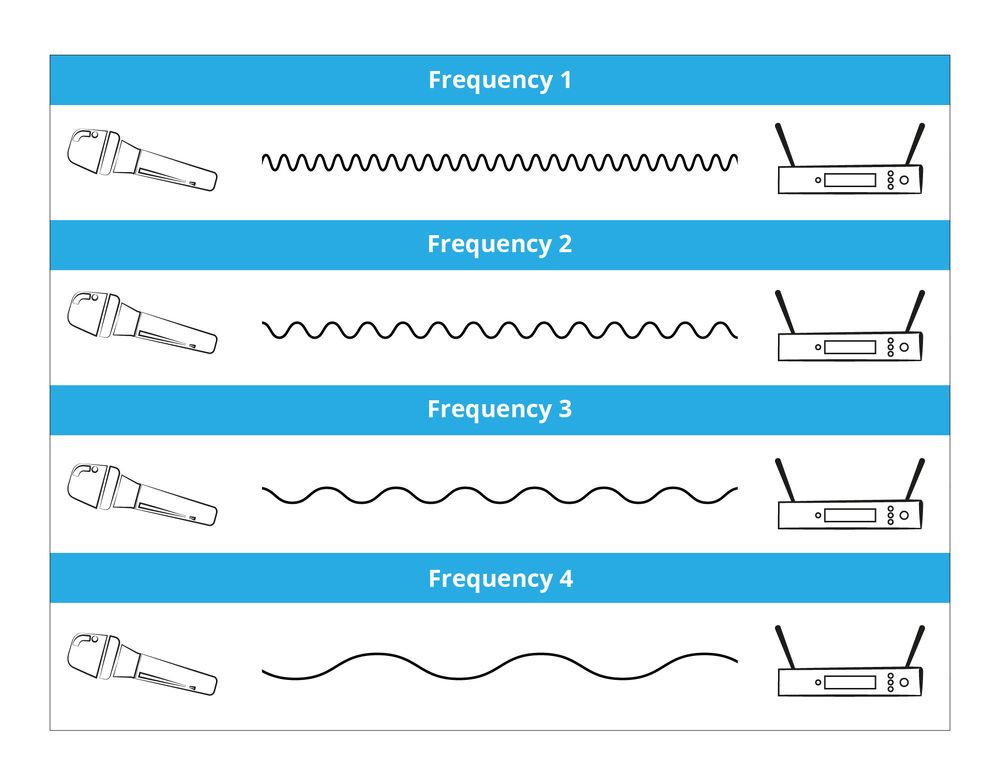
Sending and receiving on several carrier frequencies
Analogue systems and that noise
Analogue radio systems always use the principle of frequency modulation (FM).
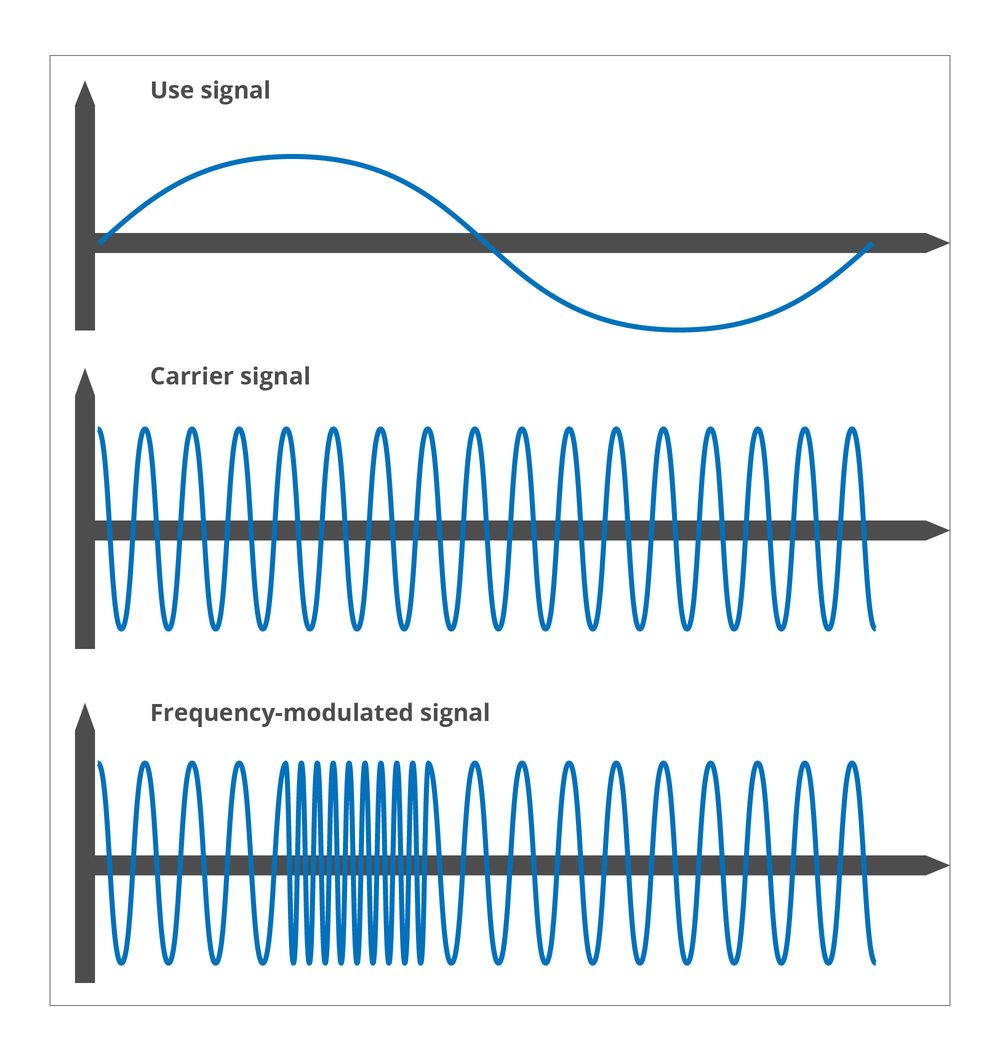
The principle of frequency modulation (FM)
In this process, the low-frequency audio signal modulates a high-frequency carrier in such a way that the carrier's frequency is constantly minimally changing depending on the audio signal. So, while you set the transmitter to a certain frequency in MHz, this frequency actually changes slightly and thus also occupies a part of the neighbouring frequency range. In order to limit the interference from the neighbouring frequencies, there's a limit to the maximum variation. This so-called frequency swing may not exceed ±50 kHz with approved radio mics. And this is the sound's bottleneck. The dynamic to be transmitted is thus lilmited to such a degree that sophisticated audio tranmission is only possible if the signal is first compressed and then expanded again on the side of the receiver. This is where companding (compressing/expanding) comes in.
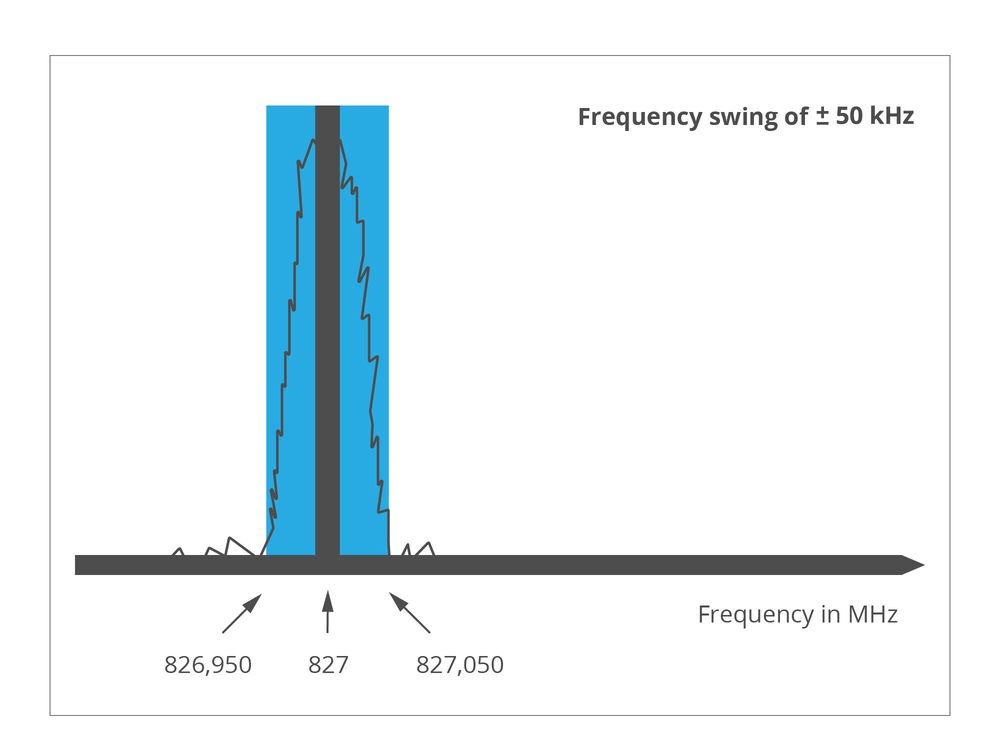
Frequency swing of ±50 kHz
In addition, we are surrounded by electro-magnetic interefering signals wherever we are, and they impose themselves onto the analogue radio signal without being hampered, thereby creating noise and even winning out against the use signal with increasing distance. The manufacturer's extertise and the filters' and compander's quality are decisive in limiting negative impacts on sound, pumping effects and squelching as far as possible. But these effects can never be entirely eliminated. Yet is always surprising how precisely top-quality analogue systems still manage to transmit the audio signal despite adverse conditions. Usually, you'll find the top quality coming at a top price, too, though.
Digital systems and latency
In digital systems, the audio signial is digitzed in the transmitter, and then the amount of data is reduced in the inaudible areas (similar to mp3) and once again modulated onto a high-frequency carrier. While there are different modulation processes ordered by amplitude, frequency, or phase, they all share one thing: there is no compander bottleneck.
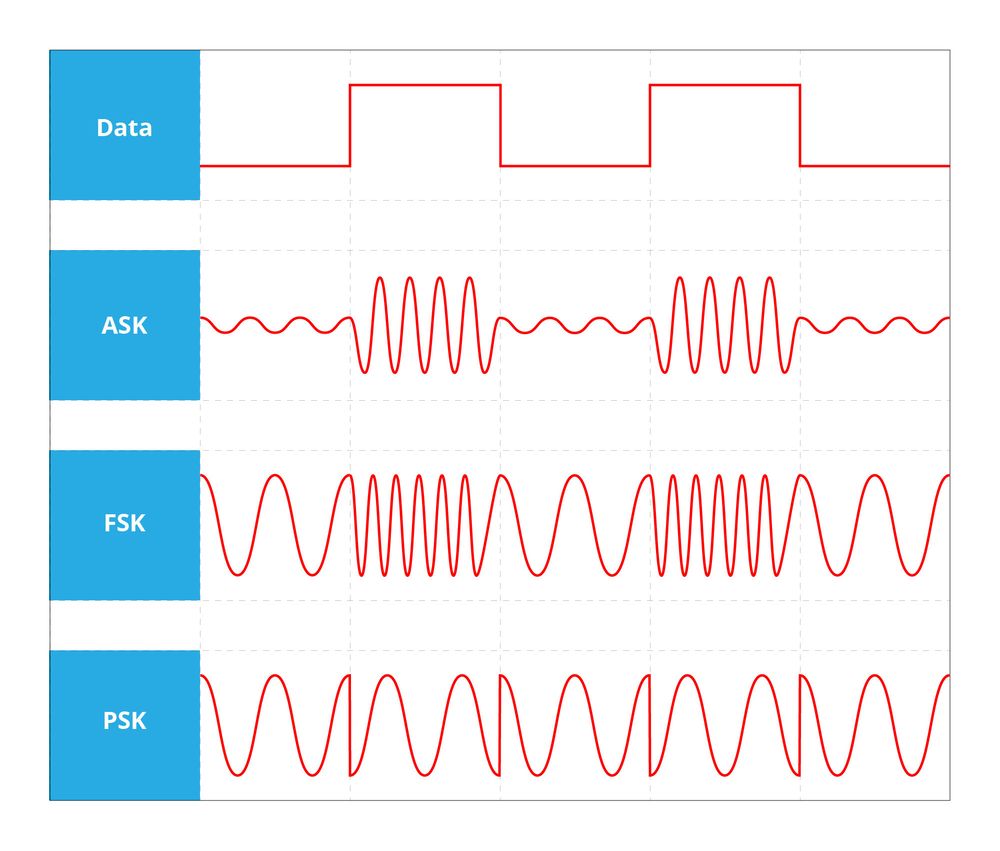
Amplitude / frequency / phase shift keying, modulation of the amplitude, frequency or phase
The received signal corresponds 100% to the transmitted signal. Sources of interference persist, and they can reduce the range, but they do not affect the sound. The digital zeros and ones arrive or don't arrive. With increasing distance between transmitter and receiver, the signal will silently disappear, but there will be no intereference noise. Since digital receivers can also distinguish carrier frequencies and intermodulations, they manage to get significantly more channels into a single frequency band than analogue systems.
In spite of the loss-free radio transission, digital systems, too experience some losses. These do not result from the radio connection itself, but before and afterwards thanks to analogue components and the AD/DA conversion. But losses are comparativley low and ideally imperceptible. Especially in budget models, an analogue system will not approach the frequency response and the purity of sound of a digital system. Digital systems differ regarding, among other things, the encoding processes, the frequency management and in the quality of the components, which results in differences in reliability, maximum number, and most likely also in sound a little.
Another advantage exclusive to digital systems is the possibility of encrypting the signal. Whenever interception is a concern you should keep this feature in mind.
There is,. however, one disadvantage all digital systems share: latency.
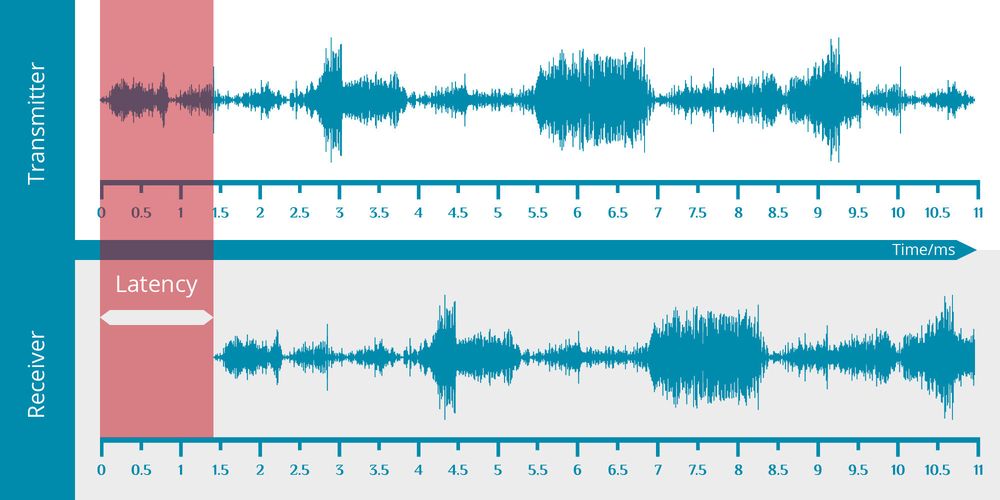
Latency
Between departure from the transmitter and arrival at the receiver, there's a time lag of between about three to seven milliseconds, depending on the manufacturer and transmission mode. To give you a feeling for the briefness of this time lag: This is about the same time it takes a honey bee to flap its wings, a twentieth of a blink of an eye, or the time it takes the sound from a floor speaker to reach your ear. Most people describe a latency of less than 10 ms as imperceptible. But the latency can quickly add up to perceptible lags, for example when further latencies are involved, caused e.g. by digital mixing desks or loudspeaker controllers.
Had we mentioned one disadvantage only? There's a second one. But this one does not affect all digital systems - only those transmitting on the typical WiFi frequencies of 2.4 GHz and 5 GHz. These frequencies are universally popular and therefore subject to more interference. Professional digital systems use the same frequency as their analogue counterparts.
Summary
Simply put, you could say that digital systems sound better and are advantageous with the exception of latency. The largest disadvantage is cheaper systems' susceptibility to interference in the GHz frequencies. Digital systems in the VHF or low UHF band offer the best of both worlds - which is the perfect transition to the next page, which is all about radio frequencies.






